Antique shows are still my favorite holiday activity, and the Dunham Tavern Show in Cleveland is held nearby. So we went to the preview party and recorded some YouTube videos (go to YouTube.com and search for our channel, Kovels Antiques).
The show was like most antique shows 10 years ago: there were few items made after 1930 and lots of prints, folk art, silver, candlesticks, signs and Chinese Export and early Staffordshire transfer wares meant to be displayed, not used. A few pieces of furniture were in every booth. We saw almost no toys or art pottery and very little costume jewelry, vintage clothing, pottery jugs or stoneware.
We interviewed more than a dozen dealers. Many dealers told us they were “show dealers,” meaning they did not have a retail shop but did many shows a year.
The first booth had a small homemade wallpaper hatbox I liked. It was unusual and important because the lining was an 1830s Cleveland newspaper. Price: $500. Nearby was the booth of the only young dealer (under 30) at the show. He had a very tall cherry grandfather clock made in Greensburg, Pa. Nice clock, working, good finish, but over 8 feet tall, so it wouldn’t fit in a modern room with an 8-foot ceiling. His tip: a room with an 8-foot ceiling would work if you took the middle finial off the clock (store it in a safe place so it can be put back someday).
A Hunzinger-style chair caught our attention. It had a triangular seat and arms, back and legs made from turned spindles. George Hunzinger (1835-1898) was an American cabinetmaker. Many of his pieces look as if they’re made from plumbing pipes and fittings. But he marked most pieces, and this chair was not marked. Price: $495.
One booth was filled with brass candlesticks dating from Queen Anne to Victorian times. Most of the 30-some pairs were English. Tip from the dealer: early sticks have a faint silver-colored line the length of the shaft. It indicates that the brass was formed in two parts that were soldered together. By Victorian times, the shaft was made in one piece. So a faint line is a clue to a stick’s age. The candlesticks ranged in price from $500 to $8,000 a pair.
A huge store spice dispenser handmade of painted tin was a temptation, but I have no available corner for it in my overcrowded kitchen. It was about 40 inches high and must have stood on a store counter. The top of the box opened and held jars of spices the storekeeper sold in small packages. The box was painted with the name of the spice company, the name of the store that sold the spices and the store’s location, Kelleys Island, Ohio. It’s an important one-of-a-kind piece and was offered for $4,000.
I guessed wrong on the age of four humorous prints hanging on a hall wall. The prints pictured college boys who appeared to be dressed in 1930s Art Deco fashions. But the prints were done in 1910. They sold quickly as a group for $585. A print dealer in another booth told us that “beautiful ladies” are not in demand, but that prints of birds’ eggs, butterflies or mushrooms are very popular. These prints are plain and modern-looking, even though they were carefully removed from 19th-century books. Decorators like them.
Another dealer had a booth filled with maps dating from the 16th to 19th centuries. We were reminded that centuries ago the continents were only partially explored; one map showed Australia as several small islands. Look for known mapmakers, extra pictures in cartouches and unfaded colors. Maps were there for any pocketbook—from hundreds to thousands of dollars.
This show was held right before Thanksgiving, and there were plenty of Christmas pictures, cards, ornaments and old-fashioned toys. One dealer had a long printed cotton stocking that pictured Santa, toys, trees and a sleigh. The brightly colored fabric was designed to be stuffed and hung at Christmastime. It was from the mid 1800s, in great condition and rare, so the asking price was $725.
There were a few 20th-century singing-bird music boxes priced at $640 to $775. Each was a cage with a bird or birds inside. Wind them up and the birds move their heads and sing. We listened to a red singing bird and I realized the bird, a cardinal, was actually imitating a live cardinal. I had never thought about mechanical bird songs before, but I recognized this one. I wonder if all the caged bird music boxes made around the world are singing the correct songs.
I don’t ever seem to leave a show without something, and this time I bought a vintage framed sardine can label picturing baseball players. I paid $4.50. The Home Run Brand label explains why baseball players are pictured, but I thought the pairing of baseball and sardines was funny.
We’re happy to say that the show was crowded and the dealers we asked were pleased with their sales.
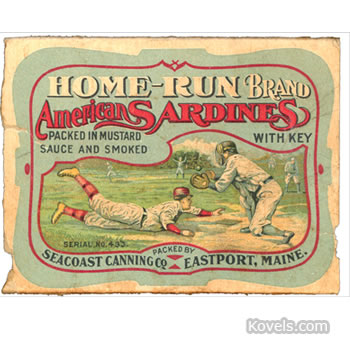
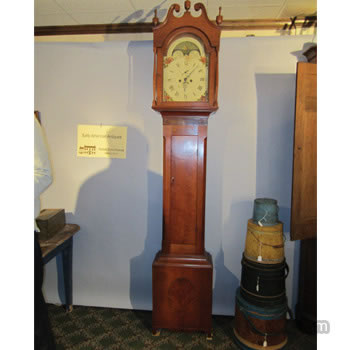
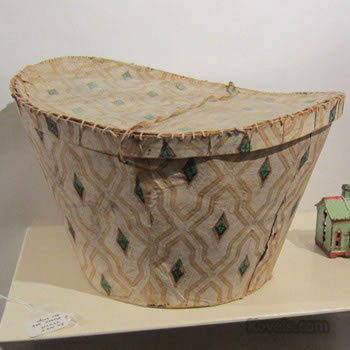
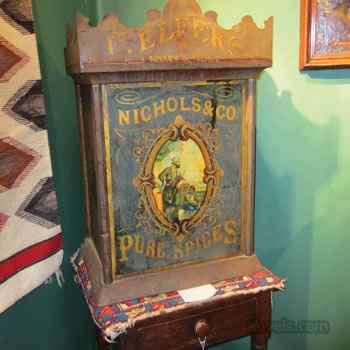
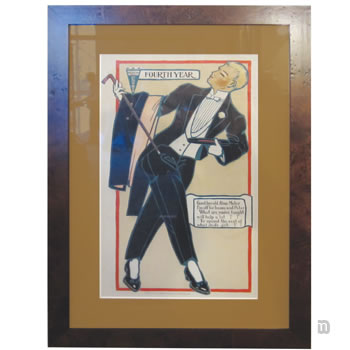



Leave a Reply
You must be logged in to post a comment.